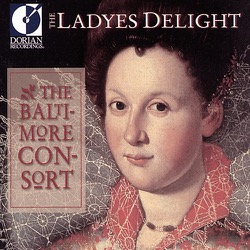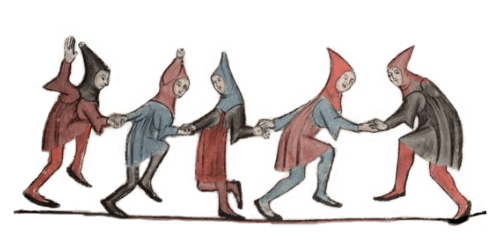
The Ladyes Delight

The Fairy Queen and her maides daunced about the garden, singing a Song of six parts, with the musick of an exquisite consort; wherin was the lute, bandora, base-violl, citterne, treble viol and flute.-The Honourable Entertainment at Elvetham, anon. 1591 Recordings such as this--and many others by the Baltimore Consort--remind us where many of our American folk music traditions come from, and reveal just how strongly connected we still are to European traditions many centuries old. The Elizabethan songs and dances on this recording are taken from several sources and they exemplify music that would have been heard in taverns, homes, ballrooms, and, in the case of "O Mistris Mine," even Shakespeare's Globe Theatre. The arrangements feature all sorts of instruments--viol, lute, cittern, bandora--the same types that were often used in performances for Queen Elizabeth I. The playing--and singing on a few of the tracks--is consistently excellent. But most amazing is the stunning virtuoso flute playing of Chris Norman, the world's foremost master of the wooden flute. --David Vernier
Tracks
- A Jigge ye Firste
- Chi Passa
- Yonder comes a courteous Knight
- Ladyes Delight
- Jumpe at my Cozen
- Consort Lesson, Book 1: The Bachelers delight
- The Dutch Courtesan, Act I: The darke is my delight
- Howells Delight
- Lavolto
- Consort Lessons, Book 1: La Coronto
- Widdowes Mite
- Robin is to the Greenwood Gone
- The English Dancing Master: The Shaking of the Sheets
- Consort Lessons, Book 1: The Lord Souches Maske
- The Queen's Treble
- Balow My Babe
- The Dancing Master: The Knot
- Sola Soletta (arr. T. Morley)
- Ye French Volta
- A Booke of New Lessons for Cithern and Gittern: Light o' Love
- My Lord of Oxenford's Mask
- O mistress mine


